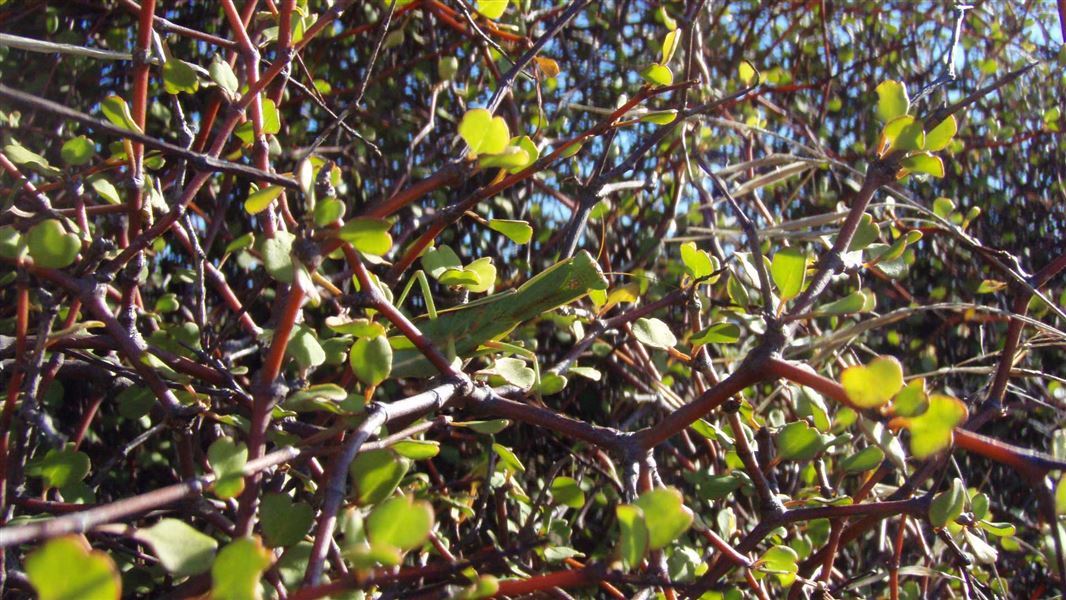Look out for the UrbanNature divaricating plants panel by the hydroslide at Moana Pool.
Like man-made structures, plant architecture takes time to develop. It is constantly being refined and improved as the environment around the plant changes. Because of this, plant forms often reflect the demands of a past environment. In Dunedin, a good example of this can be seen in divaricating plants such as the species Muehlenbeckia astonii.
Muehlenbeckia astonii and other divaricating species form a distinctive 3D structure of closely interlaced branches, often with a reasonably leafless exterior. The majority of the leaves can instead be found nestled further within the plant, separated from the outside world by the sharply criss-crossing outer branches.
Curiously, some plants that are closely related to divaricating species do not share the divaricating growth form. This gives us a hint that there was an environmental factor that played an important role in the development of divarication in some plant species, and not others.
So what caused this growth form? Some say the extinct moa holds the answer to this puzzle…
This giant herbivorous bird roamed the primitive New Zealand landscape, munching on as many juicy plants as it could get its beak on. Some suggest that it was such an important herbivore that plants began to develop ways of defending themselves.
Through the evolution of tough, sharply angled branches that were difficult to grasp, along with smaller leaves that were less easily accessible, plants that were previously a favourite of the moa began to be avoided because they were no longer worth the effort.
This suggestion of the moa’s role in the story is just one of a number of theories held on the issue.
No matter what the origin of their growth form, divaricating plants like Muehlenbeckia astonii are key species within New Zealand. Unfortunately, Muehlenbeckia astonii and other species are under threat from a number of causes, especially exotic plants that can outcompete the natives. This has led to Muehlenbeckia astonii being classified by DOC as Nationally Endangered.
What can you do to help?
Muehlenbeckia astonii and other native divaricating species can be planted in gardens. They are hardy and can be shaped to form hedges. Consider planting one at home sometime soon; you’ll not only gain an attractive addition to your garden, but be helping ensure the continued survival of this important species at the same time!
